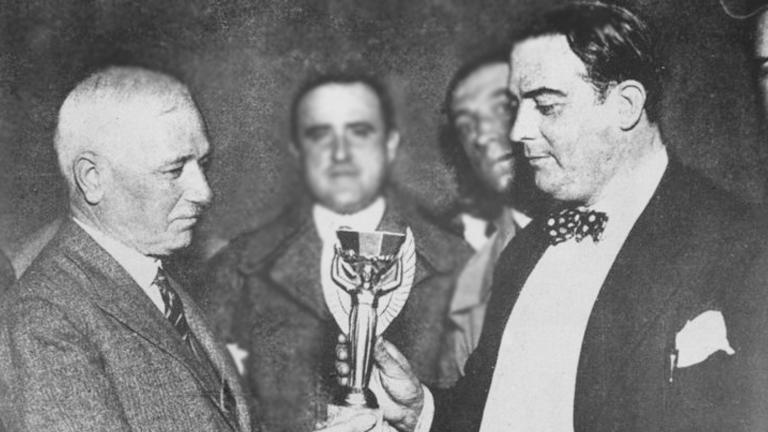BUENOS AIRES: Fans had to be disarmed before football’s first World Cup final in Uruguay on July 30, 1930. Referee John Langenus of Belgium feared that emotions were running too high ahead of the match between arch-rivals Uruguay and Argentina at the Estadio Centenario in Montevideo.
He ordered all weapons to be handed in and some 1,600 revolvers were collected from spectators. The match official remained on edge though and made sure a boat was waiting in the harbour to take him to safety if necessary.
Hosts Uruguay beat Argentina 4-2 and crowned themselves as the first world champions. But many Argentinians do not even know about the defeat – they were stuck in the river Plate on ships which could not dock because of dense fog.
FIFA initially had a hard time getting enough teams interested in the inaugural World Cup. Countries pulled hosting bids because of cost fears. When Uruguay was confirmed as host, teams in Europe were afraid of the arduous journey across the Atlantic.
In the end, only 13 national teams took part – with only four from Europe. The players from France, Belgium and Romania travelled together on the liner “Conte Verde”. The Yugoslavian team first travelled to Marseille by train for three days and from there began the two-week Atlantic crossing on the “SS Florida”.
The teams were given an enthusiastic welcome in the port of Montevideo, wrote referee Langenus, who always dressed correctly in knickerbockers. In addition to his work as an referee, he also worked in Uruguay as a correspondent for the football magazine Kicker.
The players froze quite a bit at first: July is winter in the southern hemisphere and the early games were played in snow flurries.
The first World Cup goal was scored by Frenchman Lucien Laurent in the opening match against Mexico. “After my goal, which was the first of the tournament and also my first for the French national team, we congratulated each other, but we didn’t jump into each other’s arms like we often do in football today,” he once said.
The main venue was also lacking initially. Heavy rain delayed the completion of the new Estadio Centenario and other grounds were used.
It was not until five days after the first matches were played that all the teams formally moved to the Centenario.
The road to the final was a controversial one for the hosts.
In the semifinals, they won 6-1 against Yugoslavia, but police officers or photographers are said to have pushed the ball from the touchline back into the field of play ahead of the third goal.
In the final, it initially seemed as if Argentina would take the cup home with them. At half-time, the Argentinians led 2-1, but their luck turned.
“There were only 10 of us left and then two of my teammates dropped out with injuries. There were no substitutions at that time and eight of us didn’t have a chance," said Argentina player Francisco Varallo in an interview shortly before his death at 100 in 2010.
“The Uruguayans, who were much stronger after the break, deserved to win, but for us it was a bitter defeat.”
The fourth goal was scored in the 89th minute by Hector Castro. It was also a personal triumph for the then 25-year-old, who had lost a forearm in an accident with an electric saw 13 years earlier.
The first World Cup was also the World Cup of young talents. Uruguay coach Alberto Suppici was just 31-years-old when he won the title, making him the youngest World Cup winning-coach to date. His rival in the final, Argentinian Juan Jose Tramutola, was only 27-years-old.
Despite the difficulties and only 300 spectators attending the Romania-Peru game, the first World Cup was the prelude to a recurring sporting success story.
Today, the four-yearly event is the biggest sporting event in the world on several indicators.
“We Europeans there were in agreement,” said Yugoslavian association secretary Mihailo Andrejevic, years after the World Cup in Uruguay. “Everyone who wasn’t there made a mistake.” – dpa









